Barbarossa 1941 – USSR Invaded 75th Anniversary Series [Part 1]
June 20, 2016 by crew
June 22th, 2016 marks the 75th anniversary of one of the largest military assaults ever undertaken in the history of man. This was Operation Barbarossa, the invasion of the Soviet Union by Nazi Germany on June 22, 1941. This article series will make a feeble attempt to put a commemorative wargaming perspective on this gigantic clash.
In all, three million Germans and one million Axis allies hit six million Soviet soldiers in an offensive that started the largest … and worst … war there has simply ever been.
Catch The Series Overview Interview Above
If Germany was ever to truly win World War II, it would have to be here. As it turned out, this invasion would be the biggest single factor leading to the fall of the Third Reich.
Project Scope
The war in the Soviet Union would last almost four horrific years, probably the worst 1,417 days in human existence. Barbarossa, however, was only the first Axis push, lasting about three months. Then came Operation Typhoon, their final shove toward Moscow, followed by the first successful Soviet counterattacks against the invaders.
Together, these three initial phases lasted from June to December 1941, the six-month earthquake we’ll attempt to cover in this series. We’ll see Nazi Germany make (by far) her most titanic effort of conquest, while the Soviets suffer the most dire defeats in history. Yet somehow they survive, and thus ultimately decide World War II.
I’ll use two game systems to try and bring some of the most epic moments of this campaign to tabletop. First, we’ll recreate tactical engagements through Ironfist Publishing’s “Battlegroup” game system, specifically the Battlegroup: Barbarossa campaign supplement. I’ve recently published an article series on this system, which can be found HERE.
Secondly, I’ll use an updated edition of Avalon Hill’s classic “PanzerBlitz” system for some larger-scale “command tactical” games. The Eastern Front never did anything small, after all. Published in 1971, PanzerBlitz focused on the Eastern Front, and was one of the first systems to bring modular, tactical wargaming to the general public.
Background
From its very outset, Germany’s invasion of the Soviet Union would be a different kind of war. Yes, previous invasions had been swift and brutal. But Hitler’s plan was not to merely “conquer” the Soviets. They were to be annihilated, erased from the new industrial and agricultural heartland of an imagined Germanic Empire.
Standing against this assault by one of history’s most brutal dictatorships, we have ANOTHER of history’s most brutal dictatorships, Stalin’s Soviet Union. When the two most barbaric and powerful regimes on earth collide in a continent-scorching fight to the death, we get … quite simply … the most ferocious war humanity has ever seen.
So perhaps a gentle word of warning is in order. Depending on how deep you get into the historical background of your campaigns, when you wargame on the Eastern Front, you are going to a dark, dark place.
The Build-Up
For this invasion, the Germans had assembled the most powerful army yet deployed. Three million well-equipped, trained, and confident Wehrmacht and Waffen SS troops were backed up by eighteen panzer divisions and thousands of aircraft. Another million came from allies like Rumania, Bulgaria, Hungary, and even Finland.
The Soviets certainly had a huge force to oppose the invaders. No less than six million men stood ready. The Soviets had more tanks than all other armies on earth … combined (almost 24,000 in all). The Red Air Force was also massive. But of course numbers don’t tell the whole story.
Fearful that his own army could pose a threat to his position, Stalin had recently “purged” his officer corps, killing nearly all his senior commanders and tens of thousands of his field-grade officers. The Red Army in 1941 was a headless, incompetent, flailing giant … one needs only look at their attack on Finland (1939-40) for proof.
The Storm Breaks
At 03:15 on June 22, 1941 – thousands of German artillery pieces opened fire along a 1,080-mile front. Elite “Brandenburger 800” commandos blew up more command points, assisted by German-trained Lithuanian, Belarussian, and Ukrainian nationalists.
By 06:00 the sun was up and the Luftwaffe tore into the Red Air Force, mostly on the ground. Over 1,400 aircraft were destroyed on the first day. The commander of the main Soviet air fleet, Major-General Ivan Kopets, got in his plane to survey the damage on his airfields. When he landed, he calmly got out of his plane … and shot himself.
Meanwhile, NKVD border forces were slaughtered at key crossing points. Bridges were seized or hastily built by German engineers. Grenadiers poured over the border, liquidating resistance and opening vital road junctions. Finally, over 3,000 panzers rumbled off their jump points. Barbarossa was on.
The Soviet response was nothing short of chaos. Repeated warnings, including clear reports from British intelligence, had been ignored by Stalin and his yes-men. Less naive Red Army commanders had seen this coming, and had tried to get at least some preparations in place. Overall, however, the Soviets were caught completely by surprise.
Soviet units, those that got any orders at all, were simply told to counterattack. Such orders were a death sentence under the circumstances, but any commanders who refused were immediately shot. Stalin himself fell into a catatonic nervous breakdown and didn’t emerge from his bedroom for at least three days.
First Clash
Pruzana, Belarus - June 22, 1941
So let’s start at the beginning, with one of the very first tank engagements of the Eastern Front.
As discussed in the captions above, the central German army group was assigned two complete “panzergruppe.” One of these was Panzergruppe II under the incomparable General “Schnelle Heinz” (Fast Heinz) Guderian. This was a massive force of thirteen divisions (200,000+ men), including three motorized and five panzer divisions.
Leaping across the River Bug, Guderian’s central corps (XII Army Corps) locked horns with the old but formidable Soviet fortifications at Brest-Litovsk. Meanwhile, his three mechanized corps swept around the obstacle to the north and south, and pushed deep into enemy territory.
By the end of the first day, one of Guderian’s panzer divisions (the 18th Panzer, part of XLVII Motorized Corps on the left wing) had pushed 37 miles into what is today Belarus. The sun was just beginning to set when they finally ran into a significant Soviet tank force, the 30th Tank Division (14th Motorized Corps, 4th Army) at the village of Pruzana.
In addition to being one of first major tank actions on the Eastern Front, Pruzana is interesting because of some of the tanks involved. Among these were the “Trauchpanzer III” submersible tanks, initially designed to land on the shores of Sussex and Kent. These didn’t float like DD Shermans, but crawled along the bottom by using snorkels.
The 18th Panzer Division was also attached with Special Battalion 100 attached, equipped with the “Flamingo” flamethrower variant of the PzKpfw II. There was even a detachment of British A-13 cruiser tanks, captured during the Western Blitzkrieg the previous summer.
The Soviets also had large number of flamethrower tanks, namely the OT-133 and OT-26A. Such units were initially attached to many Soviet tank divisions, but their use in combat was mercifully brief. Flamethrowers are very short-ranged weapons, and these vehicles just didn’t have the armour to get that close to potential enemy targets.
Historically, Pruzana was a disaster for the Soviets, a theme we’ll see repeated over and again through the course of Barbarossa. Simply surviving will constitute a victory for the Soviet players, since this is more than the historical counterparts were usually able to do.
Boldin’s Counterattack
Grodno, Belarus - June 24, 1941
The Soviets were stunned by the scale and ferocity of the Axis assault. Technically, Germany and the Soviets were allies due to a nonaggression pact in which they’d divided the territory of conquered Poland two years before. Stalin had since refused to believe Hitler would attack him, and now his army was paying a horrific price for his gullibility.
Utterly unprepared, the Soviets lashed out blindly. Everywhere the order was the same: Attack. Despite German air supremacy, being cut off, having no fuel, no ammunition, no coordination with other units, and having no chance whatsoever against a clearly superior enemy … Attack, attack, attack, or be shot as a defeatist and a traitor.
One of the largest of these doomed counteroffensives was launched by General I. V. Boldin, deputy commander of the Soviet Western Front, on the third day of the war. Despite being cut off, he formed up a huge “shock group” of three corps (100,000 men) and launched a desperate strike against the German forces swiftly surrounding him.
This attack would be aimed at the southern flank of General Hoth’s Panzer Group III, currently bypassing Boldin to the north. In fact, Hoth was advancing so fast he was already passed Boldin’s spearhead, and the Soviet counter-strike instead hit the flank of German follow-up forces, namely the 256th Infantry Division (XX Corps, Ninth Army).
The Soviet counterattack was doomed from the start. One of their units, the 6th Cavalry Corps, saw 70% of its 36th Cavalry Division destroyed by “Stuka” dive-bombers in a single day. Tens of thousands were killed. But finally, the remnants of the 33rd Tank Division (11th Mechanized Corps) managed to find and hit the Germans on June 24.
The fighting was hard, despite the bedraggled state of the Soviet tank force. The German 256th Infantry was hardly one of the “star” panzer divisions, after all. Yet while the Stukas and panzers got all the glory, most of the victories won during Barbarossa were due to the foot-slogging infantry and the steady work of their towed artillery.
Despite German difficulties, however, the outcome was never in doubt. The defences held, and the surviving Soviets were eventually rounded up when they ran out of ammunition and fuel. Political officers and officers were shot out of hand, enlisted men were marched too prison camps from which few than 5% would ever return.
The German advance, meanwhile, continued unbroken, with spearheads soon driving toward Minsk, Kiev, Odessa, and through the Baltic states toward Leningrad. Stalin himself perhaps said it best. During those bleak opening days, he was heard to mutter: “Lenin founded the country, and we’ve ****ed it up.”
Come back next week as we continue our narrative on this gargantuan offensive. Some of the largest tank battles in history are about to unfold in the Ukraine, and the Soviets are about to sustain some of the worst defeats ever recorded … and survive. Add your comments and suggestions, and join the conversation on this epic campaign.
If you have an article that you’d like to write for Beasts Of War then you con get in contact with us at [email protected] to find out more!
"We’ll see Nazi Germany make (by far) her most titanic effort of conquest, while the Soviets suffer the most dire defeats in history. Yet somehow they survive, and thus ultimately decide World War II..."
Supported by (Turn Off)
Supported by (Turn Off)
"Utterly unprepared, the Soviets lashed out blindly. Everywhere the order was the same: Attack. [...] Attack, attack, attack, or be shot as a defeatist and a traitor..."
Supported by (Turn Off)




































![Very Cool! Make Your Own Star Wars: Legion Imperial Agent & Officer | Review [7 Days Early Access]](https://images.beastsofwar.com/2025/12/Star-Wars-Imperial-Agent-_-Officer-coverimage-V3-225-127.jpg)




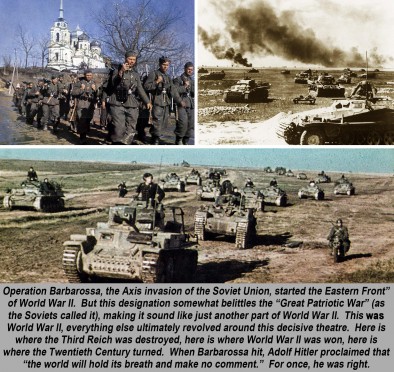
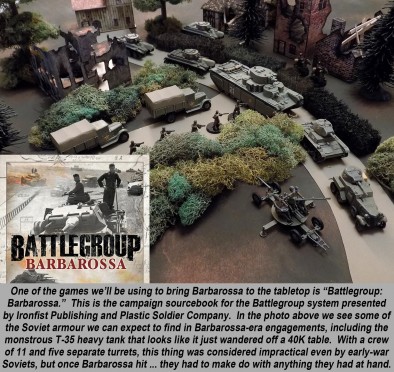
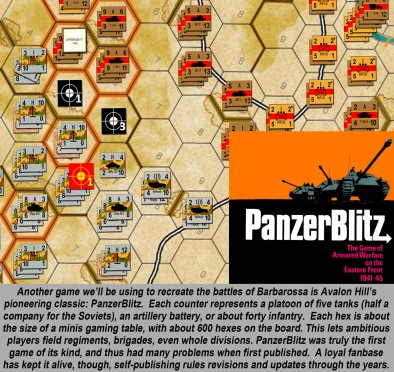
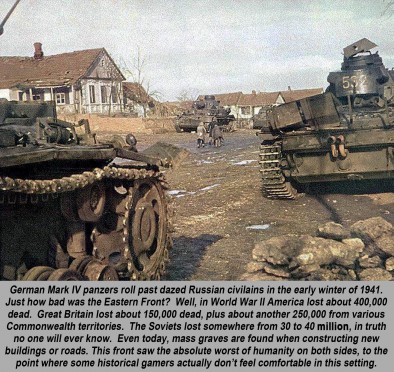

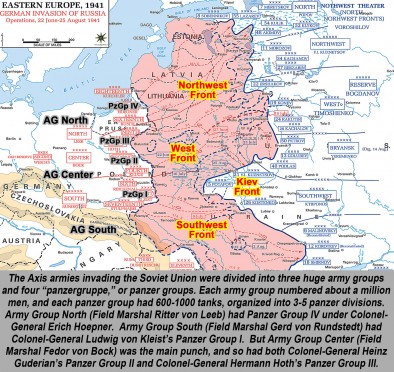
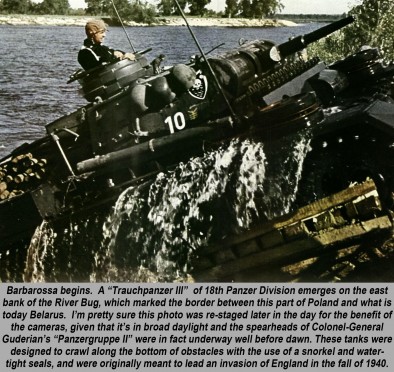
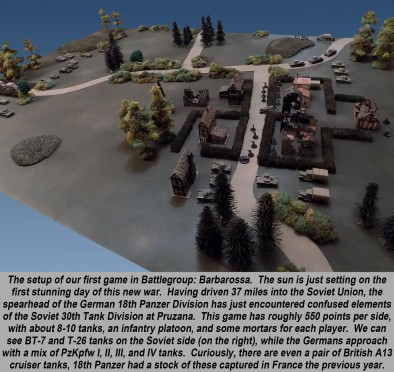
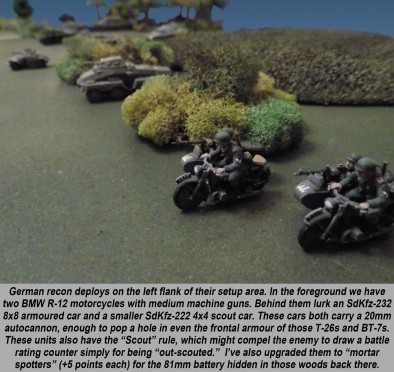
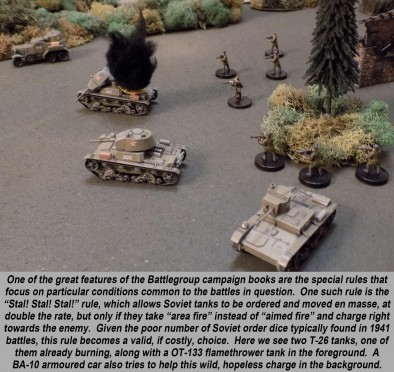
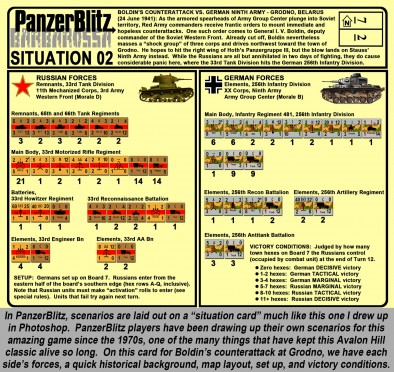
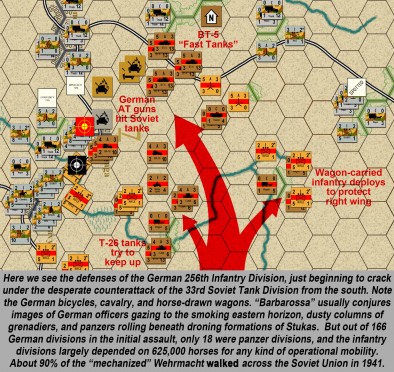
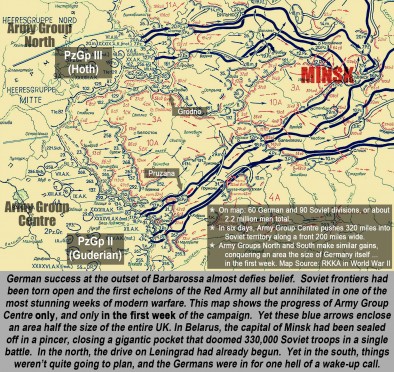




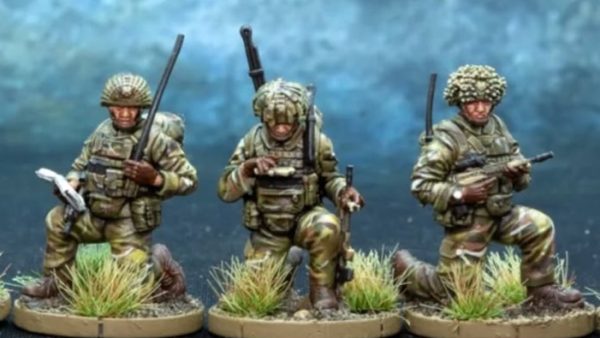


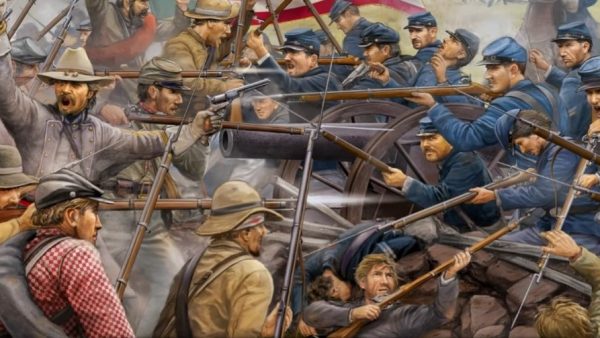


























Anouther great article , will following this
“Trauchpanzer” ?
I think it should be “Tauchpanzer” (literally ‘dive tank’) as that makes more sense.
History channel had a (Russian) series documenting the entire war from invasion to the final days.
“Soviet Storm : WW2 in the east”
https://www.youtube.com/watch?v=0A6UWkK2U4s
Thanks, @figure11 and @limburger . 🙂
Totally right about “tauchpanzer.” Sadly, that’s not the kind of typo that Corel or MS Word is going to catch on English (UK) settings. Trust me, I have enough trouble putting in all the extra “u”s in words like colour, armour, and don’t even get me started on “manoeuvre.” By the way, the website interface has all those words as “misspelled.” 😉
It’s not easy writing/researching in four languages at once. Give it a try sometime, in front of 40,000 subscribers. 😀
Soviet Storm isn’t too bad. It’s definitely one of the 30+ sources for material in this series. Watching the first 2-3 episodes, you’ll definitely see where I referenced it almost directly at least twice. The original Russian version with English subtitles lays it on a little thick, however, if you know what I mean. The more common version with English narration does make notable changes to the series’ message in many places, which tones it down a little.
That said, it’s definitely a “should watch” for anyone interested in this topic – if for no other reason than it presents the Soviet side of the issue. THIS ALONE makes it important, since this perspective is sadly lacking from many other sources in Western media, history, and gaming (not all, just most). Just be prepared for a moderate helpings of flash, melodrama, and cheese.
Other well-balanced sources include Richard Overy’s writings (Russia’s War – Blood upon the Snow) and of course the current king of Eastern Front history in my opinion, David Glanz.
There is no extra ‘u’ in armour.
That’s how it is supposed to be written 😉
I do understand how difficult mixing languaes can be. I’ve only got 3 (or 4 if you consider American and proper English to be two languages … 😉 )
I haven’t seen the original Soviet version, but I suspected it was a bit more biased originally.
There is no “u” in “armor.”
Here in America, we do not cheat at Scrabble! 😀
(Okay, that’s Eddie Izzard’s joke, but it works. 😀 )
Then again, I’m the guy that tried adding an “r” to “tauchpanzer” 🙁
C’mon, you’re a Yank, no need for those extra U’s! You’re even a Southern Yank at that. Time for some y’alls, and all-y’all-alls in your writin’.
But seriuosly, good start to the article. Question though, and I’m not trolling here, I thought I’d read somewhere Stalin always believed Hitler would betray the pact in the end. He just got caught flat-footed as to when it would happen.
Thanks very much, @bwanajoe . I’lls be tryin’ to do better at m’ wra-atin’ so yall’s kin unnerstand what (pause to spit tobacco) what’s I’ms be sayin’. 😀
No worries about “trolling,” though. There’s always going to be an element of that and am well used to it (just waiting to be dazzled by the next opus submitted by some of the critics 😀 ). But honestly this isn’t trolling, it’s a solid question.
Stalin and Hitler absolutely did not trust he each other and hated each other. Their trade and military exchange programs of the 1930s were strictly in mutual self-interest, and the Ribbontrop “Non-Aggression” Pact of August 1939 was a classic example of two blood enemies shaking hands with their right hands, while their left hands held daggers behind their backs.
Hitler always mean to attach the Soviet Union, his “lebensraum” concept for an imagined Germanic Empire was a core feature of his master plan. Furthermore, this was published in Mein Kampf back in the 20s, so it was no secret.
In 1939, though … when Germany was going into Poland … neither the Germans or the Soviets were even close to being ready to go to war with each other. Germany was hoping Britain and France would back down (which of course they didn’t), and now had to deal with these two enemies in the west before he could pivot back to the east. As others on the thread have pointed out, the Germans weren’t expecting to go to full-scale war until 42-44, so cutting a temporary deal with the Soviets was definitely needed at the time.
And of course, the Soviets weren’t ready. They were about to have their asses handed to them by Finland of all people, so Stalin was all too ready to buy a few years of security while he hurriedly tried to put his army back together after the Purges of 36-37.
Long story short – this was a temporary arrangement that both sides knew would be broken sooner or later. The question was, which side would be ready to break it first. The Germans won this race. Stalin was “surprised” by Barbarossa in what can best be described as a monumental case of wishful thinking. “The Germans aren’t ready because . . . well . . . WE’RE not ready!” Justifications like “The Germans can’t attack us until they knock England out of the war for good” were again, wishful attempts to justify this belief, which of course was horrifically shattered at 03:30 on June 22, 1941 (exactly 75 years ago in about eight hours).
A good introductory article @oriskany I am waiting for the next installments of the series. I have to agree with all subtle facts that you have pointed out here as for instance of the not so really mechanized Wehrmacht. I hope that future parts show Wehrmacht’s weak anti-tank capability. 88’s were not mobile, not many and appointed to the Luftwaffe and Germans used either their weak but very very light and thus mobile 3.7cm PAK 36 and a few 5cm PAK 38. Meeting T-34’s or KV tanks badly commanded or not proved to be a problem in the opening weeks of the campaign. Well, not a problem on the operational scale but it was the first signal that German infantry has very limited AT capability which later became a huge problem. Not many instances to show that on tabletop thou. 😉
Great points, @yavasa – and YES, we definitely get into this in Part 2 (Battles of Dubno-Brody, where the Germans first ran into the T-34 / KV-1). 😀 Battlegroup: Barbarossa does a great job on this, and not with a lot of “special rules,” and other top-down solutions. Guns have a penetration value, which decreases with range. A hit takes that penetration value and cross-references it against the target’s armor value, which yields an target number to be exceeded on an elegant 2d6 bell-curve. The values for German 3.7cm and much more rare 5.0cm guns as applied to a T-34 or a KV-1, well … let’s just say you’d better be very close, on the flank, and very, very, VERY lucky.
The 8.8 FlaK 36, as you mention, are as rare as hen’s teeth. As part of the Luftwaffe’s FlaK batteries, they’re technically not under Wehrmacht command (although these are usually attached to divisions). But that’s the problem, they’re controlled (and deployed) back at division, not the regiment, battalion, or even company level, down where they are needed. By the time an “88” gets into action, it’s only after an enemy counterattack has driven deep into a division’s operational rear (as we see at Arras in 1940).
PanzerBlitz also handles this well (perhaps even better) by showcasing the extremely limited AT value of these smaller guns … and perhaps even more importantly … their extremely short range. Not only do German 3.7 PaK 36 batteries have to ping a “5” AF against a T-34/c platoon’s “9” DF (yeah, not happening), but the PaK 36 I think has a range of 2 hexes, while even the very early-model T-34/76 As (with the shorter L-11 76.2mm gun) has a range of 5 or 6.
Battlegroup does a better job at PanzerBlitz, however, when it comes to the command / cohesion. Special Barbarossa rules like “Soviet Command Chaos” and “The Fuhrer is With Us,” the number of officers in a given size battlegroup list, etc., all make the early-war Red Army perform on the table as a big, flailing, inflexible, blunt instrument, which can be defeated by a much smaller but more agile force.
Needless to say, the Red Army sheds these weaknesses as the war drags on. By 1943 they’ve learned all the lessons from their enemies, and by 1944/45 they have evolved into a truly war-winning weapon, with well-honed expertise to match its sheer muscle. 😀
Hmmm, good to see that Battlegroup reflects such nuances. 🙂 @oriskany
Good read @oriskany
For those with an interest in PC gaming for their grand strategy I can highly recommend ‘War in the East’, published by Slitherine games. Hex based with unit counters at the divisional level it has a whole lot going on under the hood. The Op Barbarossa campaign is some 250 turns in length. I’m a few turns in with my Panzer divisions making broad sweeping advances and my Infantry are struggling to keep pace with them. However, my supply lines grow ever longer and to quote a certain television show ‘winter is coming’.
Cool @benc I remember the game was grand 😉 There was also Gary’s Eastern Front and of course Steel Panthers but with the Gross Deutschland mod that was really really hard.
Thanks very much, @benc . 😀
I was about to ask if this is the “Gary Grigsby” War in the East game. Man, what a monster game. I think I bought it two-three years ago and still haven’t finished a complete game (well, except a tutorial).
http://www.matrixgames.com/products/372/details/Gary.Grigsby's.War.in.the.East:.The.German-Soviet.War.1941-1945
Steel Panthers, of course, f***ing rules in all its versions and incarnations. 🙂 I think my favorite is still Steel Panthers III, 1939-99. But that’s like picking one member of the Swedish Bikini Team as “the most hot.” 😀 They’re all awesome.
A friend of mine and I once did a year-long campaign study of the Grossdeutschland Division on the Eastern Front in updated / corrected PanzerBlitz. We ran about twenty scenarios running from the first day of Kursk 1943 through the summer of 1944 when the unit was pulled back to Germany to take on / train with new equipment. Definitely an interesting unit, and one of the few really elite German WW2 units you can “comfortably” game with and not run into too much of the “Waffen SS” issues, if you know what I mean.
Steel Panthers only Panzer Strike come up there with it for tactical WW2 on a computer. .. Steel Panthers did get a lot from it forefather, but Panzer Strikes USP was the turn set up, that where not IGUG but you locked in your orders and the the Computer executed it for both sides at once ….
Awesome. Never heard of Panzer Strike, I’ll have to check that out. 😀
Panzer Strike pre-dates Steel Panthers by about a generation so you might be in luck with some of the Abandoneware sites, and it was DOS based if I recall correctly -I had it on the C64. Published by SSI and designed by Gary Gigsby of Steel Panthers fame.
Old games are often the best games, @rasmus . I mean, even with hex-and-counter games, my favorites are from the 70s. 😀 I’ll have to see about Panzer Strike, although I’ve had on-and-off results when it comes to porting old games into DOS-shell emulators, etc.
North Africa was another detour forced upon Germany’s resources, and while the percentage committed to it on the ground was small in the overall scheme of things, the losses incurred in getting them there and supporting them were heavy because the British still had a strong naval presence in the Mediterranean (and aircraft as well). Hitler threw more at it too late which is why roughly quarter of a million Germans surrendered in Tunisia in 1943.
Hitler had not intended to start a war until 1943 – that was what he told his senior military people when he became Chancellor. The Kriegsmarine Plan Z was based on that timescale.
Thanks, @dorthonion – are we talking about the “division/month” metric mentioned in the interview video at around 7:30? Where 91 “division/months” were committed by the Germans in North Africa against 8932 total (just over 1% – and compared against the 86% represented by the 7811 committed in the East)?
If so, I grant that this metric is a little myopic in that it doesn’t take into account naval, air, maritime, and logistical resources – only “boots on the ground” deployed division forces.
Nevertheless, the data is presented simply to make the case of how important the Eastern Front was relation to the rest of the theaters in which World War II was fought (leaving aside the Pacific). Numbers don’t lie, and size does matter.
I’ve read that Hitler didn’t intend to start a war until 1943, 1944, 1942, many versions, but one thing is certain, a lot later than actually happened. 🙂 The German military was nowhere near ready for a continental (eventually global) war. Doenitz didn’t have enough U-boats (something like 30-40 out of his promised fleet of 300). The Panzer divisions were still mostly fitted out with Pz IIs and Pz 35/38s. There were none of the Plan Z battleships (even KMS Bismarck wouldn’t be ready until 1941), etc etc. So I definitely agree with that.
I guess the big question is, would the Soviets have been better prepared by 1943? They were in a crash course to re-build their army after the Purges of 1936-37. It’s just that by 1941, none of these re-training / organization programs were even close to completion. By 1943 that might have been different. Then again, would the Soviets have launched such programs in an alternate timeline where WW2 doesn’t start in 1939? Do the Soviets realize how bad their army is after their performance in Finland 1939-40? Or do they “rest on their laurels” after their stunning victories over the Japanese in 1938 and 39?
That’s actually a tough one, and a really good question: What does a late start to World War II do to an eventual opening of an Eastern Front.
Great article, @oriskany . Once again you’ve dragged me away from my work with an “Oooh, what did Jim write!”
Question on the PB front: Why did you split the Soviet tank companies in the original PB into half-companies? Did they actually deploy them that way? I was under the impression that Soviet tank organization was similar in WWII to that of the Cold War: three troops of three, with a command tank, for a total of ten in a company.
Great question, @cpauls1 – always glad to see another PanzerBlitz fan (all respect to Battlegroup, of course).
To answer your question directly – No. The Soviets did not typically deploy their tanks in half-companies. This early in the war, they had to stick almost exclusively to full companies – if for no other reason than only the company commander vehicles had radios with which to maintain contact with battalion.
Simply put, I just don’t like unit-based games that don’t have a uniform unit of measure for the counters. In the original PanzerBlitz, as you know, Soviet tank units are considered 10-tank companies and the Germans are considered 5-tank platoons. This gives us inelegant and “ugly” design features like different stacking rules for both sides, even the wreck counters have to be handled differently. Depending on how far you want to push the realism, rules like morale and movement should even be handled differently for different sized units.
In Panzer Leader (same basic game on the Western Front) – Wehrmacht platoons are down to 4 tanks while Waffen SS platoons are left at 5, British troops are left at 4 tanks while American platoons are up at 5. Small differences like this I don’t mind (although there’s just something WRONG with seeing 13-A-12 along the top of a Panther counter! 🙂 )
But a 10 vs. 5 difference is just “nasty.”
That said, you are also correct that the standard Soviet tank platoon setup is similar to what it is today – 3 platoons of 3, + 1 company commander = 10 tank companies … x 3 companies + 1 Battalion CO for 31 tanks in a battalion, which usually yields 65-70 for a regiment or about 80-90 for a brigade depending on which era you’re talking about, and whether your unit is part of a brigade that forms into a corps, or a independent regiment, or a pre-1941 tank division, blah blah blah blah …
So why not make my Soviet tank counters platoons? Because then you have 3 tank counters compared to 5-tank counters, which is almost the same error as before in reverse. 😀 I just like looking at a map (or designing a scenario), seeing a counter, and knowing that this is a certain number of tanks. I’m a big boy, I can be trusted to know the OOB practices of the maneuver formations in question and “do the math.” 😀
All a matter of preference, I realize. You can make the same argument and “standardize on PLATOON” rather than an arbitrary “5 tanks” number. Standardization is the key. This is the “standard” I picked.
ALL THAT SAID, when my group and I ran these PanzerBlitz Barbarossa scenarios, we used a rule that required Soviet tank units to always be stacked in twos (10 tanks, i.e., enforcing the “deploy by full companies” realities of 1941 Red Army tank doctrine). Just for Barbarossa, mind you. As early as 1942 Soviet commanders started “acquiring” radios for platoon leaders.
A tank that was left by itself at the end of a Soviet movement phase was considered destroyed. While this sounds a little silly, careful review of Soviet tank losses in the opening months of Barbarossa shows this rule to be surprisingly accurate.
>> Firstly – it compelled the Soviet player to keep his tanks massed together to big, blunt, relatively direct attacks. When your tank units started taking losses, surviving “orphans” could re-stack with other nearby Soviet tank units and avoid the consequences of this rule.
>> Second the vast number of Red Army tanks lost during the summer and fall of 1941 were not killed by German guns, but simply abandoned. Something would break down, the crews would get lost and panic, or the fuel would run out. Almost any portfolio of photos taken in Russia during 1941 has several shots of German soldiers standing around undamaged but abandoned Soviet armor (some of its would even be used by the Germans, primarily for rear area security).
>>Third, this rule allowed German player to break up larger Soviet tank formations by only knocking out one or two counters per stack. This reflected the historical practice of shooting at company commanders’ tanks first, murderously apparent as the only tanks on the field with radio antennae.
I hope all that rambling made some kind of sense. 😀
As always terrific mate, looking forwards to it.
Thanks very much, sir. 🙂 I suppose wargaming on the Eastern Front can tie in to your topic on the “Too close to the bone” Sunday thread. Given the way both sides treated civilians, prisoners, etc.
http://www.beastsofwar.com/groups/painting/forum/topic/sanatised-wargaming-or-too-close-to-the-bone-thin-white-lines-or-190616-this-weekends-sunday-politics-show/
Just a couple of minor things…
While AT capability might seem inadequate, it’s not always the case. It was only inadequate when dealing with heavier Soviet tanks such as the T34 and KV series but these were not the common tanks available and the 37mm could deal with the T26 or BT series with reasonable results.
Also the 50mm Pak38 was being issued to divisions, albeit in small numbers and the short 75mm had a decent AP round too. Indeed StuGs were used frequently in an AT role due to this.
Also in the Panzer Divisions the K18 100mm field gun in the artillery regiments was found to do sterling work in an anti tank role.
The delays suffered when meeting heavy enemy armour seem more due to the time taken to bring up the weapon required for the Jon and partly why the flak 88 began to be issued to divisional flak batteries in Heer divisions, though the embedded Luftwaffe flak units cooperated closely with the Heer formations to which they were assigned.
It should also be noted that the smaller German tanks could, and did, on occasion fight toe-to-toe with such tanks as the KV series. Hermann Bix took out two KV1 tanks with 37mm rounds by shooting through their barrels, though he narrowly avoided being crushed by two of the behemoths who tried to trap him between them.
Soviet armour also suffered from poor reliability as well as being poorly handled on occasion though this wasn’t always the case.
Have no fear, @piers – in our Battlegroup games, even the 2.0 cm guns on the PzKpfw-IIs were popping holes in the BT-5s and 7s, “Knights in Plywood” as Katukov called them. @yavasa was just asking / commenting on the specific cases against T-34s. Note there are not T-34s or KVs in the Pruzana scenario detailed in the article.
The short 7.5cm L24 guns on our PzKpfw-IVDs and Es certainly did well against these lighter Sovet models do. We didn’t use very many StuGs because according to our records, the Germans didn’t have too many of these in the summer of 41. Some, just not nearly as many as we’d see later with the more famous “Warzan” model of StuG-IIIGs (with the longer gun).
And yes, in my reply to Yavasa I should have mentioned the “Unreliable” rule for most Soviet armor in Battlegroup: Barbarossa. Trust me, we totally get to that in successive parts and in the battle reports.
I will say that I definitely liked how Battlegroup allows smaller tanks to gang up on larger ones and sometimes “destroy” them, even though they really have no chance of getting through the armor. Ping them enough times and sooner or later you will roll snake eyes and immobilize them. Ping them enough times (and force enough morale checks) and you will soon cause the crew to abandon the tank. I also had a lot of success with German infantry making close assaults on Soviet tanks, especially once they’d been disabled by the “Unreliable” BRC rule or immobilizing hits.
Totally agree @piers. The T-34 and KV-1s get too much press for their actual presence in this part of the war. On the other hand most wargamers reach for the biggest stick. You also lightly touch on a subject that is often glazed over by historians and wargame rules alike. Tank Melee! Or hand to hand fighting for tanks; if your gun is no good then ram them. A last ditch tactic often employed by the Russians. A variant of this in the Winter War was for the Russian tanks to park themselves in front of Finnish Bunkers blocking the firing ports
Thanks, @jamesevans140 . Can’t argue with anything you say. 😀
All I would add, and I genuinely apologize in advance if this sounds just a touch defensive . . .
Throughout this thread people (multiple, multiple people, please understand I’m not pointing any fingers at anyone specifically) keep mentioning the T-34 and KV-1, how few they were, all their flaws, and how little difference they made in the opening phases of Barbarossa, they get too much attention, etc.
All very true, yes. Probably why they weren’t mentioned once in the article. 🙂 Probably why in Image 02 (showing all the Soviet armor to be used in these early games) there isn’t a T-34 or KV-1 in sight. Probably why in Image 05 these tanks and their variants are shown as just four models out of 19.
If we’re just having a conversation about these tanks, great. No worries and thanks for the comments! 😀 Hell, if anyone wants to “correct” me, great. But I would politely and sincerely ask many posters on this thread (certainly not “just” @jamesevans140 ) . . . can we just make sure that I actually said what people are taking issue with?
If I’m misinterpreting or overreacting, I genuinely apologize. I wouldn’t have said anything, it’s a very minor concern, but it’s persisted all week.
Thanks.
No apologies needed or expected @oriskany.
At the end of the day I suppose that the icon of all icons for the Eastern Front is by far the T34 and the KV1 was the tiger before there were Tigers. So I would imagine that anyone who has read something about this war would be expecting these little beasties.
On a side note the Finns faced 6 preproduction KV1s, a prototype SMK but oddly no preproduction T34s that were available at the time.
SMK is definitely an interesting and rare beastie, probably a more functional option than the T-100 super-heavy. Still, would have been nice to “see” it in action at least once, if only from a historical standpoint.
I know . . . and stop me if you’ve heard this one. “Two T-100s and a landkruezer Ratte rumble into a bar . . .” 😀 😀
Time to get a pint lean back and start reading
excellent idea Rasmus 🙂
Oh great, @rasmus and @buggeroff . 🙂 Talk about “getting a point” not ten minutes after I sit down at work. The only “pint” I’m getting at the moment is a cup of coffee. 😀 On a Wednesday, no less. Bleh. 😀
Seriously, though, thanks!
@piers
Of course you are right, the guns in question could eliminate the T26 or BT without a problem. I agree that what was not a big problem due to various reasons (KV’s T34’s) in 1941 or even 1942 became a big issue in 1943. Hence the famous instruction Richtlinen für Panzernahbekämpfung from 1942 on ways an infantryman can eliminate tanks in close combat. (The thing is a terrifying read)
With 1064 50mm AT guns on the 22 of June 1941 it made like 1 tank per 1 mile of front?
The 10cm K18 was so heavy and big that they were used as AT guns on rare and special occasion. What is more they were used as support artillery on corps level (1-2 batteries at most) or in panzer divisions (usually 1 battery) so yeah not really on the front line of action.
Germans got lucky and managed to capture a lot of superb at that time Soviet 76,2mm F-22 and UWS guns which were ideal for anti-tank job. These guns were so good that Germans used them to construct the Märder II and III.
*Meant 1 gun per 1 mile 😉 my bad
@yavasa – indeed, 5.0 cm PaK 38s were pretty rare at this time to my knowledge. Something like 10% of the antitank guns assigned to the antitank battalion of the German infantry divisions.
One thing I like to do when metrics and averages are mentioned (i.e., one antitank gun per mile of front) is “game it” in my head. Okay, so in 20mm, that’s one antitank gun piece for a table 16 METERS wide. Yeah, not stopping too much with that. 🙂
Of course that’s not how it works in real life. Plenty of 3.7cms are in there, and ATGs are deployed in concentrated batteries, and only at chokepoints where tank attack is likely, etc etc.
Just a way to show how rare those 5.0s really were at the outset. 😀
And checking out their penetration values in Battlegroup … still not great against a T-34 or KV-1. Not bad against the medium-armor stuff like T-35s, T-28s, etc. And of course nothing has too much trouble with a BT-5/7.
And yes, those 76.2mms are a big improvement. Together with the 7.5cm PaK40s that would come out soon, and KwK L/48s on the later Mark IVs and StG-IIIs, these really kept German in the “arms race” until the bigger 88s and 75mm L/70s could come out on the Tiger and Panther in late 42, mid-43 respectively.
Yeah @oriskany the averages that I mentioned were only to show the really small number of these guns. Not to mention not all of them went for the Eastern Front at the beginning. What is quite interesting is the fact that Germans were really slow at producing AT guns that they really needed. Plus in 1942/1943/1944 they changed the proposed number of AT guns within a division which looks like chaos in the OKH. The tactics was quite good when it comes to AT fight and the Soviets at that time, in most cases, did not coordinate their tank+infantry cooperation. Well they did not almost until 1944 which was another good thing for the Wehrmacht.
It is also worth mentioning that some French 75mle 1897/33 were used since 1942 to fight the T-34’s and KV tanks. Just another example showing that Wehrmacht lacked equipment and used captured stuff when needed.
Funny thing about the 7.5cm PAK40 is that they decided it should be a strictly an AT gun. A weird move for me taking into consideration the fact that older smaller guns were often, with success, used as infantry support guns.
@yavasa – in regards to your point on the slow production of German AT guns (and new models of tanks in general), I remember seeing some better-than-average Internet documentaries that posed the idea that early German successes in places like Poland, Belgium, and France “convinced” many elements of German command and industry that their tanks and ATGs were good enough “as is.” They won all these wars quite easily, clearly they had the right equipment. Of course these early victories were due as much as tactics and everything else. Once the enemy came up with better tactics (or just started emulating German tactics), the weaknesses in early-war German armor would become murderously apparent (example: some of the battles in the early Desert War).
Another issue was in the design features of many Allied tanks. While they had great armor, guns, and even speeds, their crew layouts were very bad. Even the early Soviet T-34 had only two men in the turret, so the commander had to double-duty as the gunner. The French were even worse, with otherwise great tanks like the S-35 and Char B had only one man (commander, gunner, loader). Many had guns in the hull. Soviets were still playing around with multi-turret weirdos like the S-100, T-35, and T-28. These features make the tank very poor despite their great speed, firepower, and protection. The “backhand” effect of this was that since the Germans were easily beating these “better” tanks, they lulled themselves in a belief that their own tanks (in many cases) were perfectly adequate.
Wrong.
Once the Germans ran into things like the T-34 and KV-1, and once the Soviets started to learn how to better use them (scrapping the idea of a cumbersome “tank division” in October 41 and replacing with the more nimble “tank brigade” – the Germans realized they were in real trouble. A whole range of solutions were hurriedly thrown into place, from the new PaK 40 7.5cms, the upgrade of the PzKpfw-IV to the new F2, G, and eventually H models (KwK L48 7.5 cm gun), installing this same tank-killer gun on the new StuG-III variants (F, and the G with the schürzen plates), and of course the Panther and Tiger. 😀
But as far as antitank capability goes, you’re totally right, the Germans seemed to waste a lot of time in 1940-early 41, and spent the rest of 41 and 42 in a big game of “catch up.” With the Panther and the Tiger they hoped to fundamentally retake the lead, but at least on the Eastern Front, the degree to which they succeeded is open to debate.
@oriskany hear,hear!
😀
I’m gonna have to disagree here with regards the Tiger.
It was the Char B and the Matilda that made the Germans realise they needed a heavier tank.
The design brief went to Henschel and Porcshe in May 1941.
The Pak40 was also requested a long time before meeting T34s…
Okay, in the interest of friendly, high-level discussion (absolutely not trying to pick an argument or “win the Internet” here) … I gotta agree to respectfully disagree … partially … on this. 😀
I mean, sure, Rheinmetall gets the requirement specs for what would become the PaK 40 in 1939. And after 2½ years, no German AT battalions are equipped with them (that I can find). I mean, in June 1941 less than 10% of the battalions in German infantry divisions even have the 5.0cm PaK 38 (that’s one battery per division, and that’s if you include the antitank companies / batteries attached directly to the infantry regiments, which I’m not sure you should do). And just for argument’s sake, I’m checking “First Wave” German infantry divisions to yield the biggest benefit of the doubt.
So yes, PaK 40s were requested. The Germans crushed the French Army’s tank force … without them. They crushed the BEF’s tank force … without them. In the spring of ‘41 they’re stomping on the WDF / XIII Corps in Libya and Egypt … without them. They went into Russia 2½ years after Rheinmetall got the specs. Less than a year later the Germans go into Russia, the PaK 40 is everywhere. Just sayin’.
In summary, I don’t think @yavasa and I are arguing that programs like the Tiger and PaK 40 weren’t already technically in place and undergoing “progress” (*ahem* whatever that term means in German war industry 1940-41). But it’s pretty clear that new development in German ground armaments is pretty lethargic after the Fall of France. The screwed-up upgrades to the Mark III alone make that case (initially the Ausf. Gs get the L4-whatever gun instead of the requested L60, the L60 doesn’t get added until the Ausf. J/Specials). I feel that programs like the PaK40 and Tiger got a hell of a kickstart once the Germans realized what the Soviets were rolling out.
Now before, I would totally agree about how few T-34As and Bs were even around at the outset of Barbarossa (something like 1200, out of a theoretical Red Army tank strength of 24,000?). And I’ve already agreed that the T-34, especially these early ones, were hardly war-winners. The veterans themselves say so in transcribed interviews.
Here’s one thing I’ve always wondered. German intelligence on Soviet dispositions was pretty detailed at the outset of Barbarossa. Did they not know about the T-34? Did they just discount it? How was it such a “shock” (however short-lived it might have been) when the Germans had such intelligence? Or was their intelligence not that great after all?
Back in 1940 it takes a while to develop, test and then mass produce a weapon.
The first combat trial of a Pak40 was November 1941 if my memory is working correctly. So pretty good going from request to initial production really.
The Tiger wasnt rushed, the Panther certainly was though.
I dont think there is any malaise in German tank armament development to be honest. Upgunning of Panzer IIIs had begun and the Pak38 was entering mass production.
Seems a logical progression with reasonable development time to me.
Also the Germans had to make the decision to maintain tank and gun production. When you change weapon systems, factories need time to readjust or in some cases manufacture new assembly lines.
Doing this would have reduced the tank replacement rate needed to bring units up to strength for Barbarossa.
Im not sure its as simple as thinking their stuff is ‘good enough’ as if they did, why then did the Char B and Matilda spur them to look again at heavy tank development.
I think its more circumstance. The need for tanks, of any type, was critical and production lines had to be maintained. Alongside this gun development plodded along at a considered pace. The Germans could never produce enough armour.
The other key was simplicity of supply. Standardising guns allowed ease of productiin and supply of ammunition. Bring in a new weapon and that logistics chain needs reworking too. The Panzerwaffe wanted the short 50mm as a dual purpose gun. Dont forget, they were not in the business of fighting tank versus tank unless they had too. The Germans also had plenty of tungsten at the time and the best quality AP rounds. I think this, and the development of the Pak38, plus the Luftwaffe requesting all use of light metal alloys were why the pak40 had a lower development priority.
The arrival of the T34 and chums helped galvanise and speed up developments but im not sure their was an attitude in the Panzerwaffe that what they had was good enough as they were concerned by Allied heavy tanks in 1940, and earlier in 1939 by the intelligence from the winter war and the Soviet tank developments made. I think it’s more a case of working with what is available. Nothing like a new threat to then speed things along…
As for German intelligence it was always poor. They did have armour samples from Soviet tanks knocked out in Finland, these led to the request for the Pak40, but the T34 wasnt seen till the 1941 May Day parade, and really went unoticed.
Cool deal, @piers . 😀
“The arrival of the T34 and chums helped galvanise and speed up developments …”
Chums, I like it! 😀 Yeah, this is pretty much all we’re saying. Certainly didn’t “start” the development programs cold turkey.
“As for German intelligence it was always poor. They did have armour samples from Soviet tanks knocked out in Finland, these led to the request for the Pak40, but the T34 wasnt seen till the 1941 May Day parade, and really went unnoticed.”
Yeah, that’s one thing that’s always struck me odd in the histories. Luftwaffe pilots were logging thousands of flight-hours over Soviet territory, with Soviet AA gunners told not to fire at them lest they “provoke” the Germans. They had radio frequencies, nationalist spies and saboteurs in place, deployment positions, communication hubs, airfields, all of this, but when the Germans run into the T-34 just days later, they’re always described as “shocked.” Okay, I know there weren’t that many T-34s as compared to models like the T-26B and BT series, but come on, man. I guess they had better intel in some areas than others?
Two other possibilities:
German intelligence seems much more tactical and operational than strategic. They know the exact locations of Soviet border defenses and immediate support echelons right in front of them, but less about deep reserves, mobilization plans, production capability, etc (i.e., operational-strategic)? Maybe these T-34 formations (few as they were) are further back? I mean, each Mechanized Corps has one Tank Division in it (two medium and one light tank regiment), but I don’t have detailed records on exactly which Mech Corps / Tank Divisions have T-34s (very few, I’d expect).
One of the large first encounters the Germans have with the T-34 (according to my sources) is Dubno-Brody-Rovno, June 24-28, 5th and 4th Armies, Southwest Front, so that’s Marshal Kirponos … a man who had his shit together a little better than his peers. Maybe he had these held back for his counterattacks, maybe he had them “hidden” a little better, maybe he was just a little luckier? Maybe this encounter is better remembered because he had his tanks more concentrated and their commitment was part of a larger battle?
I dunno, it’s late and I’m rambling. 🙂
I think the ‘shock’ isn’t that they had the T34 but that its armour and gun was such a departure from what had previously been assessed. Same with the KV series.
Its a shock born from complacency. Surprise that the ‘Slavs’ could produce such a vehicle. This is why I think the overall shock is limited and quickly overcome.
Im not entirely sure German air recce and tactical intel was all that good either. Certainly was poor in other operations too. When compared to Allied and even Soviet intel later in the war, it doesn’t stack up very well. They did have some success, but these seem largely limited to regional counter-intelligence operations such as that run by the Gestapo in Holland.
If all you see is T26 and BT7 tanks, why would you even consider a T34 to be much different if you did see one? The response to the KV series was to request bigger guns, but doctrinally, the German panzer arm was more about deep penetration than involving in tank to tank engagements anyway.
As for the T34, by Barbarossa I think 967 had been delivered to units. Only five Corps got significant numbers of T34s – 4th & 6th received around half of all delivered, 3rd, 8th and 15th got smaller numbers.
The big issue with the Soviet tank fleet in 1941 was in the engines. T-26 and BT series engines had a run life of around only 100 hours before needing a major overhaul and engine replacement. Its reckoned that at the time of the invasion, around 30% of Soviet tanks needed a major overhaul and 40% required rebuilding. This means a major section of the tank fleet was in very poor shape.
But there are further issues with the T34 and KV series. One rarely mentioned is the issue with ammunition production for the 76.2mm guns. Ammunition production had been severely delayed and its thought that the stocks represented around 12% of what was actually needed. Many T34s went into action without a full ammunition load and worst of all was the lack of AP rounds. Most T34s went into action without any AP rounds at all. Add in the production problems with the clutch and transmission and the lack of spare parts due to the rush to produce new vehicles and they suddenly become less of a threat than has been made out. Further compounding losses was the lack of a suitable recovery vehicle for the heavier tanks…
One other key point on the early T34 is its poor optical performance. Soviet crews, lacking communication and poor visibility, found it hard to mass firepower and to even find targets to engage. This leads to a contrasting rate of fire, where a Soviet tank is taking around three to four rounds fired at it for each round it is able to get off. Spotting enemy AT guns was even more of an issue for T34 crews. One German 37mm gun crew reported firing over 20 rounds at a T34 before a round jammed the turret ring causing the crew to abandon it. The gun did not take any fire in return as the lone T34 was unable to spot the target to engage it. This highlights an issue we don’t often consider – That a concealed gun versus a lone tank with poor visibility has a distinct advantage and can overwhelm a tank by simply firing enough rounds to eventually do enough to force the crew to give up the fight.
Even investigations into T34 combat only losses in 1942 still showed around 10% losses to 37mm rounds, with 54% losses to 50mm rounds. Interestingly that report specified only a 3.5% loss to 88mm rounds. However Id voice a note of caution in the Soviet findings in that report as I suspect some rounds indentified as 50mm might have been 75mm rounds, but it does show that the lions share of combat ‘kills’ seems to have been done by guns of a lower calibre than might be expected. How much trust we can put in that report is debateable but its worthy of note as it comes from a Soviet source.
Good afternoon, @piers –
I think the ‘shock’ isn’t that they had the T34 but that its armour and gun was such a departure from what had previously been assessed. Same with the KV series. Can’t argue with that – “Knights in Plywood” armor on the BT series and 45mm guns to the 76.2s, sloped armor on the T-34, and the “land battleship” 😀 that was the KV-1.
It’s a shock born from complacency. Totally agree. 😀
Only five Corps got significant numbers of T34s – 4th & 6th received around half of all delivered, 3rd, 8th and 15th got smaller numbers. Now these specific formations I never had. Awesome! Thanks very much. Just in time, too … Part 02 publishes next week and features the Battle of Dubno (large involvement of 8th and 15th), in which I use some T-34s.
Its reckoned that at the time of the invasion, around 30% of Soviet tanks needed a major overhaul and 40% required rebuilding. This means a major section of the tank fleet was in very poor shape. That sounds like a more detailed version of the data I’ve read, where “30% of the Soviet tank fleet” (immense as it was) “was operational.” 30% requiring overhaul and 40% a rebuild would leave 30% operational. 😀 And of course, a big part of these were drastically obsolete models. Who can’t love the poor little T-38? You put it on the table in 15mm and it’s just so cute.
But there are further issues with the T34 and KV series. One rarely mentioned is the issue with ammunition production for the 76.2mm guns. Ammunition production had been severely delayed and its thought that the stocks represented around 12% of what was actually needed. Cool, that I didn’t know. 😀
One other key point on the early T34 is its poor optical performance. – Yep. 😀 Soviet tank crews have described it as looking through glass that was warped and green (like trying to spot enemy tanks through a Heineken bottle). And as bad as it was it, production quality on components like this got even worse as the factories were moved east.
This highlights an issue we don’t often consider … [AT guns, concealed, bad tank visibility, Rate of Fire of ATGs vs. tanks] – I dunno, I feel Battlegroup does a pretty good job at this. I mean …
>> AT guns (especially when properly deployed) are tougher to spot on the observation table.
>> AT guns (especially when properly deployed) will usually get the first two rounds off against an advancing tank due to being properly placed and taking an “Ambush Fire” reaction order. Then the tank (which has advanced) only gets one shot back (Maneuver and Fire order), after which (if the ATG is still in place) the gun gets two more shots. There’s the four-to-one you mention. 😀
>> One thing that’s really come home to me in recent Barbarossa games is how the Germans, even with 3.7 cm or 5.0 cm guns, can sometimes knock out T-34s and KVs just by pinging them over and over. Sooner or later you’re going to get that “1” on the morale check (assuming other required conditions, of course).
>> I hesitate suggesting house rules when I’m still learning the “real” rules, but maybe some kind of -1 on the observation check when the spotting unit a “Buttoned Up Tank?” Tanks can be unbuttoned (well, some nations, based on training doctrine), but maybe this makes them easier to pin? (commanders hit by shrapnel, snipers, small arms, etc)?
Seriously, I’ve been playing a fair amount of Battlegroup: Barbarossa lately, and the results I’m seeing unfold naturally on the table are really great, and seem to match what I’ve read for years in both German and Soviet accounts, especially for 1941.
We tried hard with Barbarossa to reflect the right feel. It was a tricky one as we didn’t want it to be the same as either Blitzkrieg that followed or the later war books.
I think it works well, and it has a good feel yet still retaining some degree of balance, though we did have several other rules we ended up taking out to make things flow right.
You could easily simulate the poor Soviet optics by giving them all -1 to spot.
Perhaps a -1 for Soviet optics, or really just for any army (or player) that tends to operate with the tank (or specifically, the tank’s commander) buttoned.
Israeli tank commanders almost always fought unbuttoned in 56, 67, and 73 … and have both the kill rations, and commander casualties, to prove it. Their studies estimated it “doubled the tank’s effectiveness” (a rather nebulous metric) but it’s got to be one of (one of) the factors in their success.
Players might decide to have their tanks unbuttoned, giving their tanks a better chance to spot targets, but suffer a corresponding +1 chance to be pinned somehow, both on the Armor Penetration Table or the Area Fire Effect table.
Anyway, not really one for monkeying around with house rules on a system I’m just starting to get comfortable with. I always change a game sooner or later, I probably measure “how good” a game is by little I don’t have to change it.
And what do you know, I haven’t changed anything with Battlegroup yet. 😀
@oriskany
One division 1000 kilometres away requires a lot more logistical effort than a division 100 kilometres away – if I recall correctly, something like 80-90% of the troops on the Allied side in western Europe were support formations rather than actual combat units. Thousands of gallons of fuel were burned delivering hundreds of gallons to the front line (Red Ball Express etc). Operation Market Garden was a trade off – the Allies had just enough fuel to go north for the Antwerp/Rhine area or south for Bavaria and beyond. Monty got the fuel…
Back to Russia: one of the things that came as a surprise to the Germans was that where maps had indicated many roads, it transpired that they were no more than dirt tracks, so of course when it rained or the snow melted, everything ground to a halt. The Soviets knew that fuel was always in short supply so they ran the German units ragged, feinting at many locations before launching actual attacks. That also left many German vehicles broken down with no access to spares so they were trashed and abandoned as there was no way of getting them to a repair depot.
The whole ‘might if’ scenarios can be taken all the way back to WW1. The ‘Antiques Roadshow’ featured a painting by a talented young german artist who died in battle. He was in the same regiment as Hitler, someone who aspired to be an artist but did not find success. The commentator posed the question how different the world might have been if the other artist had lived and Hitler had died instead.
Then some people go further back and wonder how the Romans would have fared on the steppes… 🙂
Great post – @dorthonion –
“One division 1000 kilometres away requires a lot more logistical effort than a division 100 kilometres away.” Very true, which is a big part of how the Eastern Front basically killed the German war effort. By the time you get to places like Stalingrad, the distance from Germany to the front line is in excess of 2,000 kilometers, carried over terrible roads, rail lines that are the wrong gauge, and swarming with tens of thousands of partisans.
But I also remember coming across statistics during last year’s Desert War article series, where I read that for every gallon of fuel Rommel was getting at El Alamein, ten gallons of fuel were required to get it there.
The conditions of the roads in Russia were indeed horrific. You look at photos of Barbarossa, and “major highways” look like the roads in Mad Max Fury Road, Seriously, it’s basically a smooth river of dirt that dissolves into a morass of mud with the first onset of the rasputitsa autumn rains, not to mention the spring thaws.
Ironically, the German mechanized units could actually move around quite well when the winter freeze FIRST hit, since it froze up the mud and made the ground hard again. Once the temperature REALLY started to fall, however, you have their synthetic lubricants freezing in their engines and recoil tubes, the synthetic rubber in their tires and fuel lines crumbling to black chalk, and vehicles having to run almost all the time to keep their engines from freezing up, devouring fuel supplies still further.
The Germans went into Russia with something like 625,000 horses. Almost all of them died that first terrible autumn and winter. First they died of exhaustion. Then they froze to death. Then the Germans ate them to avoid starvation . . .
But all of that is covered in Parts 4 and 5. 😀
Add to that the ‘late’ start of the operation, which meant that they got to those roads during the worst kind of weather they could have imagined.
Totally, @limburger . If Barbarossa had started “on time” on May 15, 1941, we’re looking at Smolensk my mid-June, “Typhoon” and Vyazma by mid-August, and the Mozhaisk Line by the beginning of September. German spearheads would have had Moscow under artillery fire by the time those rasputitsa rains hit, so they might not have taken Moscow right away, but the time-slot that is historically occupied by Typhoon is instead a direct assault on Moscow (October-November), with the Soviets still unable to redeploy 30+ divisions out of Siberia. German supplies haven’t hit rock bottom yet, the men aren’t freezing to death yet …
Then again, it’s possible we could have had a “Napoleon in Moscow” model again. The Germans take Moscow, but the USSR doesn’t fall? Unlikely, but certainly possible.
A great start to Barbarossa @oriskany
So if this isn’t the biggest military operation what is?
Oh man, @zorg , I guess that depends on how you measure it. Overlord, for example, encompassed far more than the initial landings of 156,000 men. By Overlord fully developed and was “concluded” in August, there are almost 3 million men involved, plus the crews of the 6,000 ships involved (1 million men at least) and all the air power (another million on top of that).
The Soviet counter-invasion out of the Soviet Union (purposefully kicked off on the three-year anniversary of Barbarossa, June 22, 1944) had, at its outset, about 2 million men committed by the Soviets. But this was also just part of a larger operation of linked offensives that rolled out in phased release that soon had the whole Soviet line moving forward from the Baltic to the Black Sea. Add all that up, and you have something like 4-5 million men.
It’s tough to say. It’s a little subjective and open to debate.
interesting so overlord is probably the largest combined as in all three forces being involved,
but they are all very close physically in numbers?
I don’t mean to be evasive, @zorg , but it really depends on how you measure it. Some definite contenders would be Overlord, Bagration, and the Vistula-Oder Offensive of January-March 1945.
Of course, the biggest one of all never happened, Operation Downfall, the ground invasion of Japan. 😀
would probably be the bloodiest as well @oriskany
Oh God, yes. Might not have racked more dead than the whole Eastern Front, but would heave easily doubled the American butcher’s bill for World War II.
I think I read somewhere that the beaches were being code-named for American car manufacturers, so “Chevrolet Beach”, “Oldsmobile Beach,” “Studebaker Beach,” etc. The invasion was being named “X-Day” instead of “D-Day.” It’s been suggested that if this had gone down (both “Downfall” invasions, Kyushu in October of 1945 and Honshu / Tokyo Plain in April 1946) – American history would hardly remember beaches like Omaha and Utah, or that whole “D-Day” thing. That’s how big, and how horrific, the X-Day invasions would have been.
? I don’t know I think even the kid’s would have been flung in to stop the marines would have been a million times worse than Berlin @oriskany
Every single man, woman, and child was being mobilized. 60-year old grandmothers were being issued bamboo spears to face Marines with Thompsons, .30cal machine guns, and flamethrowers. The Americans were even ready to use chemical weapons (I can’t remember the code-name of the plan, begins with a “G”), something even the Germans didn’t do in World War II.
But of course, that’s kind of a different topic. 😀
the bomb’s saved a blood bath for both sides.
Probably can’t argue with that. Although there’s always the hope that the Japanese might have surrendered when faced with actual invasion. Slender, I know, but possible. I mean, they surrendered when faced with the A-bomb, right? Once the true horror of full-scale ground war hit Kyushu, the Emperor may have overruled his cabinet / War Council and forced a surrender, much like he did in fact after Nagasaki. The second invasion on Honshu / the Tokyo Plain might not have been necessary.
There’s also the question of the Soviets. They entered the war against Japan on August 9, the same day Nagasaki was hit. 1st and 2nd Far Eastern Front, the “Transbaikal” fronts, spearheaded by Kravachenko’s 6th Guards Tank Army, overran Manchuria and basically wiped out the Kwangtung Army very quickly. The deal FDR made (and Truman inherited) was for the Soviets to come in and help in an invasion of Japan. So if this had gone down, we’re looking at a “North Japan” and “South Japan” much like Korea and Vietnam, or East and West Germany.
Perhaps even with a “Tokyo Wall” ??
@zorg :
If you only look at the number of casualties caused by both bombs on the day they were dropped then yes it might.
However there have been a lot of indirect casualties due to radiation affecting generations afterwards …
That’s certainly a valid point, @limburger . The highest numbers I’ve seen are about 150,000 immediate dead in Hiroshima, 80,000 in Nagasaki (I’ve seen as low as 80,000 Hiroshima, 40,000 Nagasaki). But as time progresses that number has to go up.
Still, given the tens of millions of expected Japanese dead if a full Operation Olympic + Operation Coronet = Operation Downfall had been unrolled to their full horrific scope in 1945-46?
I didn’t mean to make light of the casualties I was thinking of the overall deaths of the civilians + Japanese & US troops would have been much higher on both sides. @limburger
agreed. 😀
the mongol conquest
Does anyone have reliable numbers on that? Of course, if we’re using “land area covered” as a metric, I would have no argument. 😀
nice overview btw, who would have thought the ulus of Jochi would stand shoulder to shoulder with Kiev Rus mirasçıları against the Brothers of the Sword
I recall reading that the Russian railway system was a different gauge than the German one, so the Germans had to dig up the railway and lay new track for their trains. A very time consuming job.
Very true, @darthcheese – the Soviet rail gauge was significantly wider than other European rail lines, and tremendous effort had to be expended by German logistics to rip it all up and lay new track. Until this could be done, German rear area units were also using trains to bring supplies and troops to across Poland and Rumania, unload them, truck them to another rail station inside of the Soviet Union, RE-load them on another train, and carry them the rest of the way. Either way, a major drain on logistical and support resources.
And on top of that they’re also dealing with resistance groups destroying the railways too.
Even if they weren’t very effective it still meant the Germans had to use extra resources in order to protect their transports.
Absolutely, @limburger – Huge partisan problems for the Germans on the Eastern Front, almost from the very start. Many were simply soldiers that had been cut off in these massive battles of encirclement with which we’ll be dealing in Parts 02 and 03 (Bialostok-Minsk, Dubno, Uman, Smolensk, the Dvina River, Kiev, Vyazma, etc., etc., etc). Most were killed or captured as the pockets were liquidated, but the Germans never had enough infantry to really make these pickets air-tight. So thousands of Red Army soldiers would escape and either make it back to their own lines or remain behind as partisans.
But these weren’t free-wheeling rebels. Resistance fighters, Red Army men, escaped POWs, you name it, any Soviet Partisans were soon bound together into a tightly-centralized command structure run from Moscow. Pretty sure NKVD and GRU operatives were put in place to make sure these partisan cells worked as part of an overall plan.
Of course, there were separatists, especially in the Ukraine and Baltic States. These partisan groups never worked with Moscow, and fought viciously against both the Germans and the pro-Soviet partisans too. They’d eventually kill a Soviet marshal (Vatutin, February 1944), and fought against the Soviets when they “liberated” the country. Some of these weren’t stamped out until almost 1950.
You know, just in case you thought World War II “ended” in 1945 . . . 😀
yep, Soviet Storm mentioned that these partisans were effectively an extra army for the Soviets to use.
Quite unlike the resistance in the west where allied command really could not force them to do anything.
Wars never have a nice simple final date.
That only ever happens in fiction …
Completely agree, @limburger . I don’t have the numbers in front of me, but the amount of troops and resources the Germans had to keep behind the lines to secure (oh wait, I mean FAIL to secure) their lines of transport, supply, communication, etc … I know it’s in the hundreds of thousands. I’ll have to poke around on that.
Suffice it to say that the presence of even half of these German troops on the front lines might have made a big difference. 😀
@oriskany don’t forget the thousands of troops & resources that the Germans had to take from the frontlines to be used for AA unit’s for all the bombing raids especially later in the war.
That’s one thing I’ll always concede re: the different “importance” of different fronts. The actual effect of the Anglo-American strategic bombing efforts against German industry will always be highly suspect, one thing that I don’t feel can be debated is the draw of the Luftwaffe fighter squadrons and AA defenses away from the fronts (especially Eastern) and back to defend German cities and industry. I’d hardly call it a true “second front,” but one can’t deny the drain of German fighter and air defense assets off the Eastern Front due to American and British bombing, which in turn must have helped the Red Air Force gain a parity, and then a superiority, over the German Luftwaffe. 😀
thinking of the 88s moved from the front line not tank? killing for one thing.
As always with German armies… logistics are an after thought.
Poor operational logistics did as much to delay the Germans as the Red Army at times.
Also the bigger guns might have been rare but so we’re the T34s and KV tanks. There were around 960 T34 and 500 KV tanks available in June 1941. Plus the issues with the transmission caused plenty of problems. Around half of all Soviet tank losses in the summer of 41 were mechanical write offs. 4th and 6th Mechanised Corps lost virtually all their T34 and KV tanks during movement to the area of combat. If we look at 1941 as a whole, then the Soviets sustained a loss rate of around 7 tanks for every German one lost.
The 105 howitzer is credited with the first T34 kill and although the intital shock is well covered the Germans quickly learnt how to deal with them. Most of the new T34s and KV series were lost within three weeks of the campaign starting. 6th Mechanised Corps ceased to exist by 27th June.
My personal view is that the shock of the T34, while certainly evident after the initial contact with the vehicle, dissapated quite quickly as means to knock them out were quickly introduced. Also the Germans did not seek out tank to tank engagements and tried to bypass armoured formations when possible. I also think that the T34 ‘shock’ is a nice post war excuse for the campaign not going as it should and then Mother Winter is added to the mix. Both of these overshadow the huge sacrifice made by Soviet infantry formations trying to stop the German campaign.
@piers – As usual, I gotta agree with most of this. 🙂 I’ve probably done more reading from the Soviet side than the German side, but even so, the “tank terror” of the T-34 / KV-1 seems to be pretty temporary, especially given the incompetence of early-war Soviet tank crews.
There’s always the famous photo of Germans inspecting three abandoned T-34s which their crews drove straight into a bog, still in perfect formation, sunk up to their running boards.
These early T-34s were loaded down with a whole portfolio of flaws, everything from warped glass in the vision blocks, bad 2-man turret design, no radios, cumbersome ammo storage (only the first 9 rounds available before you had to start taking up sections of the turret floor – WHILE moving cross-country, of course), and of course as shown in Battlegroup: Barbarossa, the shorter 76.2mm gun initially. Stackpole publishing has come out with a couple of books written around interviews with T-34 crewmen, and they did NOT consider their tanks “wonder weapons” in those early days.
But, especially, when you write: “… the huge sacrifice made by Soviet infantry formations trying to stop the German campaign.” I couldn’t possibly agree more, especially in the bypassed pockets that refused to stop fighting even after they’d “lost.”. Plenty on that to come in future parts. 😀
Looking forward to seeing the next installment.
Personal per project of mine is the history/background of the 33rd Grenadier Division “Charlemagne”, who at this stage were still known as the Légion des volontaires français contre le bolchévisme (LVF).
And boy, do things get interesting real quick.
Hang onto your butts, people… 🙂
Hey, @wittmann007 – man, great minds think alike. Yes, we definitely highlight one of the most famous early battles of the LVF in October, 1941 – the Battle of Borodino Field. This will be in Part 04, where we talk about Operation Typhoon (see 16:40 in the interview video).
The LVF was attached to the Wehrmacht 7th Infantry at the time, and get into a ferocious battle against 32nd Red Banner Rifle Division (a Soviet division that earned it’s “Red Banner” status fighting against the Japanese in Mongolia, 1938 and 39).
This was the first big crack against what was called the Mozhaisk Line, very close to Moscow. The LVF, 10th Panzer, and 2nd SS “Das Reich” Motorized Division (they’d become “PanzerGrenadiers” later) – I think all part of XL Motorized Corps (again, upgrade to XL, or 40th Panzer Corps later) – ran into the 32nd Red Banner at the exact same field that Marshal Kutuzov fought Napoleon at Borodino in 1812.
They call this 1941 engagement “The Battle of Borodino Field” so as to minimize confusion with the more famous Napoleonic Battle of Borodino in 1812.
From some other writing I’ve done on the subject:
>>>>
Curiously, the 7th Infantry Division also had the 638th Infantry Regiment attached to it, more commonly known as the Légion des Volontaires Français, or LVF. This was a unit of 2,400 Frenchmen under the command of Major Roger Labonne, men who either preferred military service to conscript labor after the fall of France the previous year, or genuinely hated and feared Bolshevism.
This German spearhead was in for a rough ride as it approached the Mozhaisk Line. In their path was the 32nd Red Banner Rifle Division, one of the first divisions to arrive from the Far East. The 32nd had earned its “Red Banner” designation as part of the 39th Rifle Corps in July and August of 1938, where it had helped decisively defeat the Japanese. This division was not like many of the others who’d fought against Barbarossa or Typhoon so far. These men had won major victories after Stalin’s purges, and had avoided the subsequent disasters of Finland and Barbarossa. Their officers knew their business, and the men had smelled gunpowder before.
Needless to say, Das Reich’s smooth ride over open ground was destined to come to a impolite halt. The first bloody nose came at the village of Elnya, where a famous series of Soviet antitank pillboxes jammed up a Das Reich column of PzKpfw-IIIs while they were trying to cross a river. The first and last tank of the column were hit first, leaving the rest of the column helplessly strung out in the water. Sergeant Harintseva’s bunker still stands there to this day, a monument to the day’s heroism.
Still, the Germans were able to bypass this obstacle and continue the drive toward Mozhaisk. But they ran into the rest of the 32nd Red Banner Rifle Division (part of the reconstituted 5th Army, now under the command of Katukov’s boss from last week, General D. D. Lelyushenko). The battlefield where the two forces met was no more a stranger to death and blood than the men who gathered to fight there. This was Borodino, where Marshal Kutusov and Emperor Napoleon Bonaparte had fought an epic battle in 1812, the last time an invading army had come this close to Moscow.
The symbolism was lost on no one. Field Marshal von Kluge (Commander, German Fourth Army) visited the front and spoke in particular to the men of the LVF, reminding them that Germans and French had fought together against the Russians on this very field 129 years ago.
As for the Soviets, they staged the 32nd Red Banner Division’s headquarters on the exact spot where Kutuzov had his headquarters in 1812.
@oriskany, we are a dying breed! 😀
Really looking forward to this. Watching intently!
Thanks, @witmann007 ! Again, Borodino is in Part 04, so it’s a little ways off, but it’s coming! 😀
strange how some things can repeat.
@oriskany did you ever play LNL games?
Awesome sauce btw!
Thanks very much, @ab5000 . Yes, I have tried Lock n Load, Band of Heroes (paratroopers in Normandy). Got the ever-livin’ @@@@ kicked out of me by @naznarok , who was teaching me the game. We also used to play some of the games in Tide of Iron series.
Also, another friend and I played much more of the “Valour and Victory” series, which used to be free-to-play (download and print) on the web. I think it also runs on Vassal. On our tables, we’ve run Western Front, a lot of Eastern Front, and a complete campaign of US Marines in the Pacific (from Guadalcanal all the way to Okinawa).
Many of these systems / series are vaguely similar, in many way simplified and streamlined, and more accessible (i.e., fun 🙂 ) versions of the old Advanced Squad Leader game from Avalon Hill.
Jim you’re a legend, great series, looking forward to the rest 🙂
Thanks very much, Mick. 😀 Definitely hope you like the rest.
Meanwhile, we’ve got the more detailed battle reports from our actual tables rolling out here:
http://www.beastsofwar.com/groups/historical-games/forum/topic/barbarossa-soviet-union-invaded-75-years-ago-today-battle-reports/
I promise these gaming tables get better! 😀 The first ones are always a little bland.
So we are doing what the Historians call the “Road to Moscow” in just 5 articles. This will certainly test you great skill in condensing things and I look forward to reading the results.
As this is just the cover page I will keep my comments to the global rather than drilling down at this stage.
Many German soldiers when debriefed after the war by the Allies claim Barbarossa was a pre-emptive strike not an invasion. Surprisingly there is a small amount of truth to this. Two ego driven tyrants cannot share the same cotenant. Both Hitler and Stalin knew that one of them needed to attack the other. For his part Stalin knew it had to be him. According to the current doctrine of war for the day one primary tenement was war was to be fought on foreign soil not Russia’s. In keeping with this he planned to attack a weakened Germany after its long war with France and England. He felt morally wounded by France’s and England’s quick exit from the war to dominate Europe. They stabbed him in the back. This also gives a bit more insight to the thinking of the man. Why would any country deliberately lose a war to stab the leader of another country in the back. Finding himself betrayed he believed the Germany’s attack would come in 42 or 43 so he had to get ready. He was not to get that luxury.
Then we come to the issue of Stalin himself. In old Hollywood movies the good guys had white hats and the baddies had black hats. This issue was we had a black hat among our good guys. To justify this at the time and right up until quite recently that black hat had to be sold as a grey hat to justify our support for this Tyrant. Did I say grey, I meant to say whitish grey, umm err white is what I meant. So the tyrant Stalin becomes our dear old uncle Joe, almost father Christmas himself. We talk of the freedom of Russia and not about freedom itself. The false logic of the enemy of my enemy is my friend is pushed to the limits. Perhaps by fighting with us Stalin will see the errors of his ways and change, NOT!!
So in the histories of the West we created this enigma that is Stalin.
A dark, dark place. Man if the abyss had an abyss surely the only road to it would be the Eastern Front. Of all the monsters of myth and legend surely man is by far the worse. This is perhaps what we find so difficult when we look closely at the Eastern Front as we have to look into the mirror and see this monster looking back at us. Once one side falls into this pit it appears to take little effort to drag others down with it.
On the wargame table it is extremely hard to portray the vastness of these battles, even at reinforced battalion level. The huge envelopments that are supported in current shock and awe tactics. However the Germans say this is a mistake and the envelopments should have been much smaller.
Historians have a habit of telling us about blitzkrieg only from the spear point and berate the German army for not being fully motorised and or armoured. They seem to completely forget that the point of the spear is supposed to do as little fighting as possible as it is supposed to run deep creating panic. Most of the fighting is supposed to be done by the foot slogging troops to reduce the pockets of resistance. They do not require speed as they are the huge wrecking balls following the jack hammers. For this part of the battle for Russia the ratio of armoured and motorised units to non armoured non motorised units is about right for this operational level fighting. However this will be one of blitzkrieg’s last summers and a different kind of warfare will be needed but not really found before the German’s were forced on the defensive permanently. But as they say that is a story for another time. 😉
A great hook for this series @oriskany and it appears that this article series is going to generate a lots of discussion. Each person view of what is war is different which will make these discussions very interesting. I liked the intro video and it looks like a keeper for the Oriskany format we like so well. 🙂
Thanks, @jamesevans140 –
So we are doing what the Historians call the “Road to Moscow” in just 5 articles.
Yeah, not easy. The original campaign journal I wrote for this in PanzerBlitz was 206 pages (125,000 words) not including maps and situation cards. Hey, at least the research was done ahead of time.
Many German soldiers when debriefed after the war by the Allies claim Barbarossa was a pre-emptive strike not an invasion.
Indeed, the “Paneuropean Crusade against Bolshevism.” As posted above:
Stalin and Hitler absolutely did not trust he each other and hated each other. Their trade and military exchange programs of the 1930s were strictly in mutual self-interest, and the Ribbontrop “Non-Aggression” Pact of August 1939 was a classic example of two blood enemies shaking hands with their right hands, while their left hands held daggers behind their backs.
Hitler always mean to attach the Soviet Union, his “lebensraum” concept for an imagined Germanic Empire was a core feature of his master plan. Furthermore, this was published in Mein Kampf back in the 20s, so it was no secret.
In 1939, though … when Germany was going into Poland … neither the Germans or the Soviets were even close to being ready to go to war with each other. Germany was hoping Britain and France would back down (which of course they didn’t), and now had to deal with these two enemies in the west before he could pivot back to the east. As others on the thread have pointed out, the Germans weren’t expecting to go to full-scale war until 42-44, so cutting a temporary deal with the Soviets was definitely needed at the time.
And of course, the Soviets weren’t ready. They were about to have their asses handed to them by Finland of all people, so Stalin was all too ready to buy a few years of security while he hurriedly tried to put his army back together after the Purges of 36-37.
Perhaps by fighting with us Stalin will see the errors of his ways and change, NOT!!
Indeed very true. FDR bashers here in the States will usually put forward his conduct with Stalin at conferences like Tehran and especially Yalta as evidence that he was somewhat naive in thinking he would work with Uncle Joe, and by getting him into his new “United Nations,” FDR would have secured a cooperative USSR for decades to come.
A dark, dark place.
Thanks so much for calling this out! You know I actually re-drafted and re-submitted the article to get that line in (and that point in general).
Man if the abyss had an abyss surely the only road to it would be the Eastern Front. Of all the monsters of myth and legend surely man is by far the worse.
Couldn’t have said it better.
This is perhaps what we find so difficult when we look closely at the Eastern Front as we have to look into the mirror and see this monster looking back at us. Once one side falls into this pit it appears to take little effort to drag others down with it.
Amen, brother. This is why, in the supporting thread battle reports, I’ve been dropping in corny jokes, memes, and cutesy graphics, to deliberately “lighten up” the mood, tone, and discourse.
On the wargame table it is extremely hard to portray the vastness of these battles, even at reinforced battalion level.
That’s why God invented PanzerBlitz! Okay, Jim Dunnigan invented PanzerBlitz but the point still stands. 😀
I liked the intro video and it looks like a keeper for the Oriskany format we like so well.
Warren’s idea, that was. 😀 Originally that interview was recorded for the Weekender but other content forced the team to squeeze it into the XLBS. Perfectly fine with me, but since only backstagers get to see the XLBS, I think the team wanted to give it a little more exposure. 😀
Thanks very much for the discussion and the comments! 😀
Thanks @oriskany.
I truly understand the Hitler and Stalin prewar relationship as it is completely natural if not counter logical.
In our far North we are infested by saltwater crocodiles. The males establish large territories and will kill a smaller male entering said territory. Yet just before the monsoons pools and rivers start to dry up. When this happens you will find males laying side by side covering each other with near liquid mud. Then when the rains come they will happily kill each other. It would appear that survival is the strongest instinct.
Almost reminds me of Mobster families. 😀